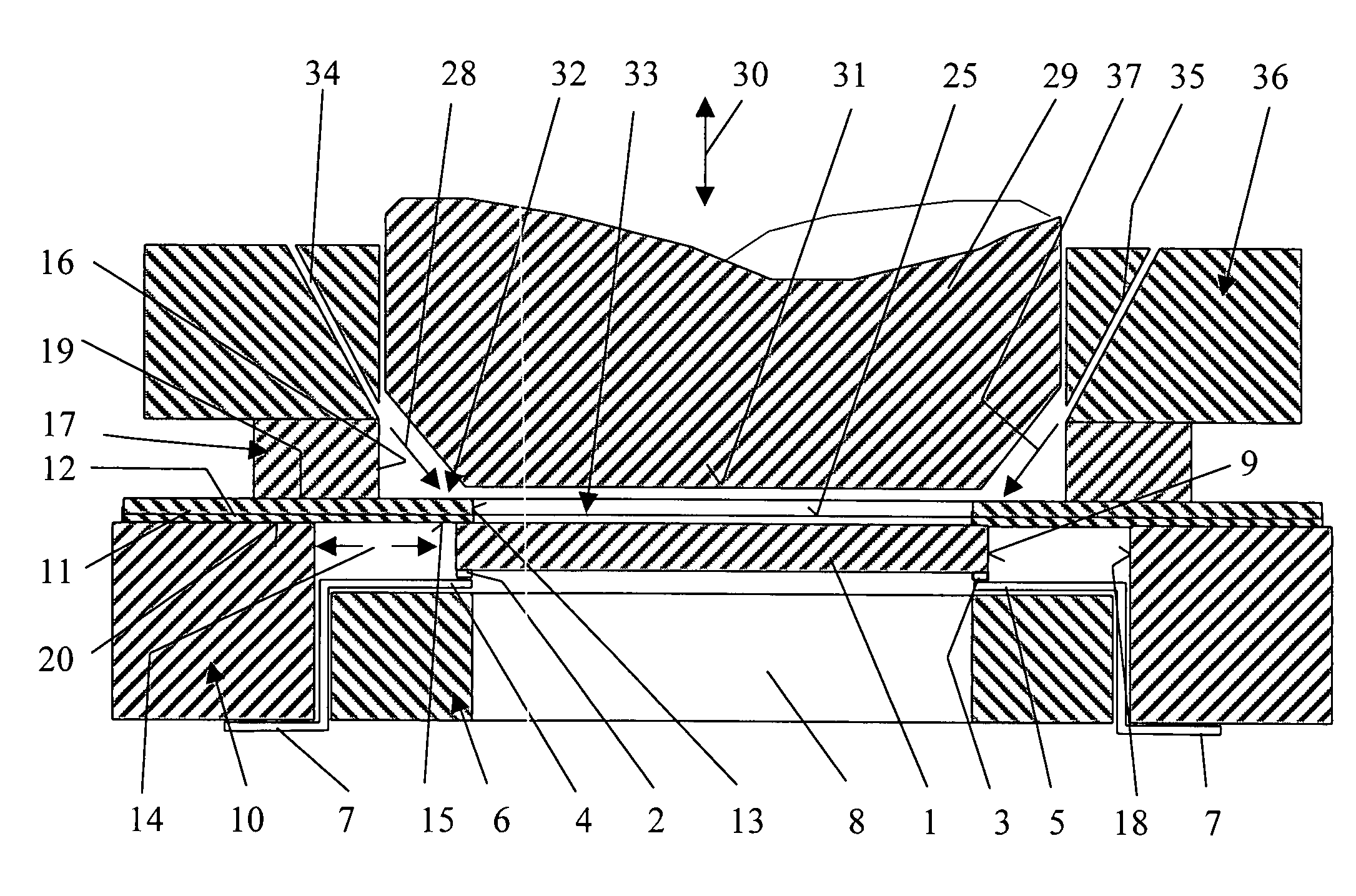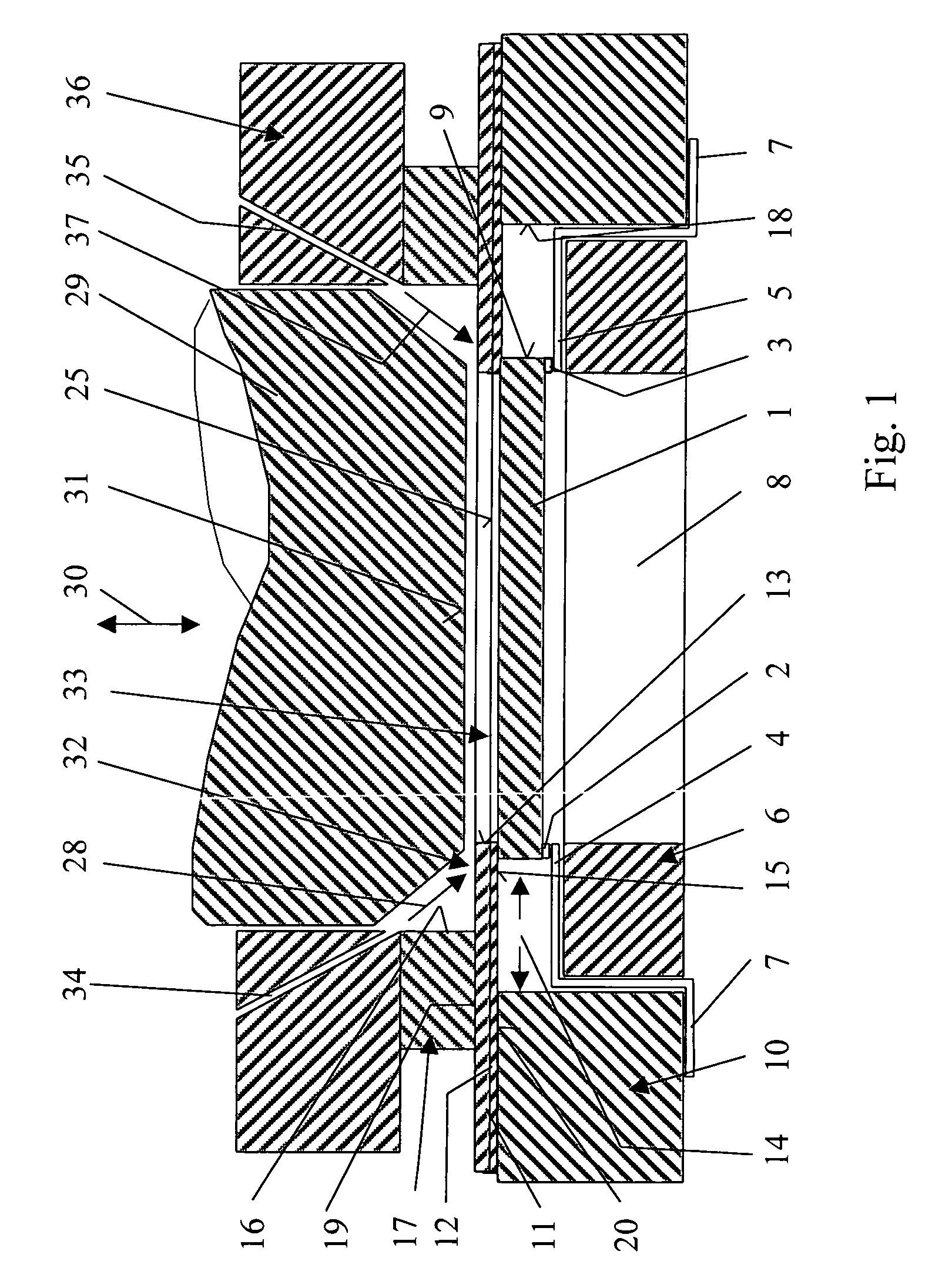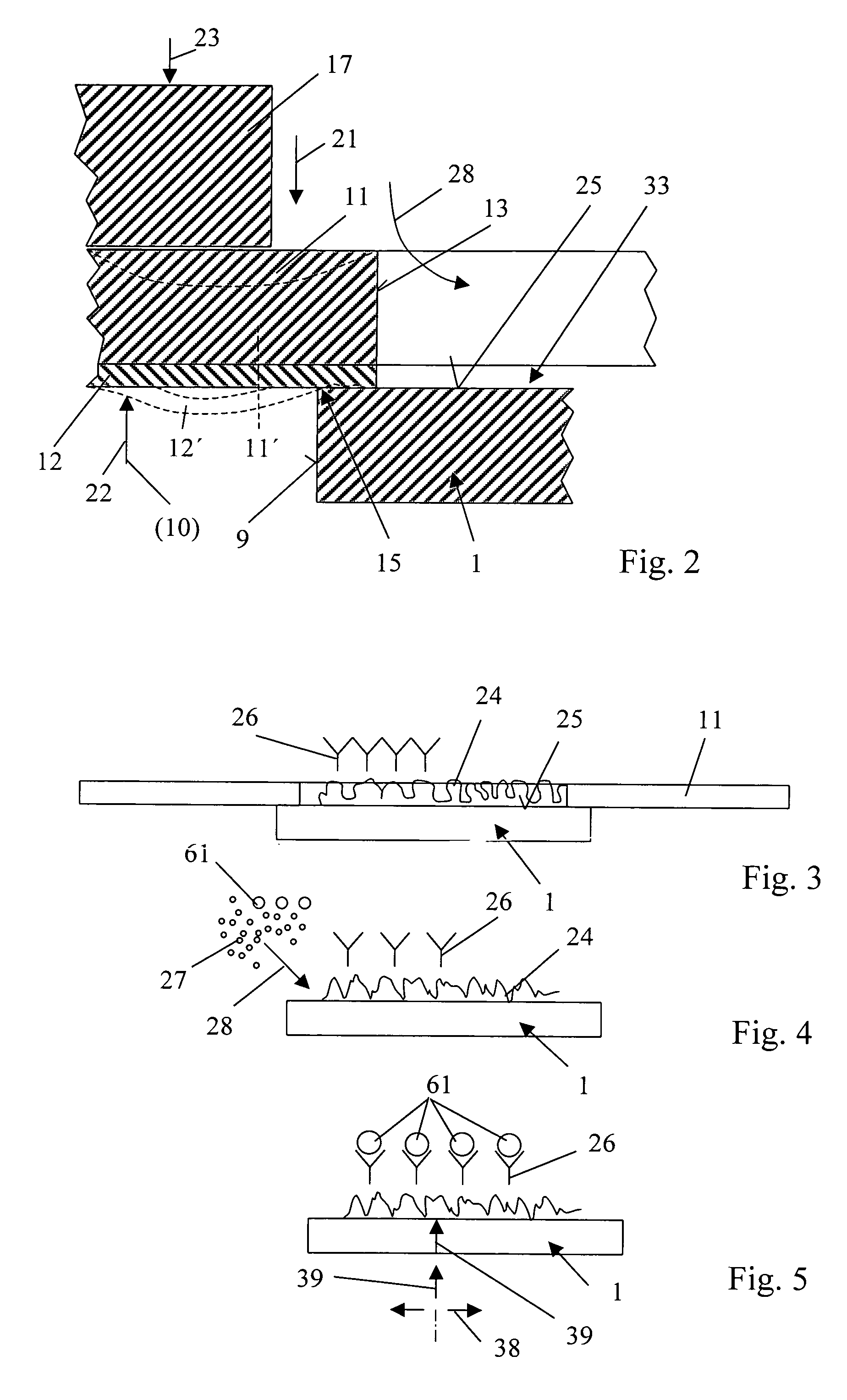Measurement chamber and resonator
a measurement chamber and resonator technology, applied in the direction of vibration measurement in solids, instruments, and fluid analysis using sonic/ultrasonic/infrasonic waves, can solve the problems of reducing the accuracy of measurement accuracy, difficult or perhaps even impossible to maintain uniform electrical contact under this principle, and reducing the influence of flow parameters
- Summary
- Abstract
- Description
- Claims
- Application Information
AI Technical Summary
Benefits of technology
Problems solved by technology
Method used
Image
Examples
Embodiment Construction
[0081]FIG. 1 shows an enlarged, schematic view of the lower part of a measurement chamber 36 according to FIGS. 7-11 and a measuring device, which is connected and sealed to the lower part of the measurement chamber 36.
[0082]The design of the measuring device is described in the following.
[0083]A disk-shaped resonator 1 (e.g., with the size of a 1-cent piece), serving as a disk-shaped oscillator, is supported in an inventive mounting.
[0084]At opposite points on its outside circumference, the resonator has two opposing contact surfaces 2, 3, which are very thin and which, in the exemplary embodiment according to FIG. 1, are shown with exaggerated thickness.
[0085]In reality, these contact surfaces 2, 3 are connected to the bottom surface of the resonator 1 in such a way that they are essentially flush with it.
[0086]The contact surfaces 2,3 of the resonator 1 rest with a precisely defined contact pressure on the opposing contact surfaces 4, 5 of a contact ring 6.
[0087]The contact ring ...
PUM
| Property | Measurement | Unit |
|---|---|---|
| thickness | aaaaa | aaaaa |
| thickness | aaaaa | aaaaa |
| thickness | aaaaa | aaaaa |
Abstract
Description
Claims
Application Information
 Login to View More
Login to View More - R&D
- Intellectual Property
- Life Sciences
- Materials
- Tech Scout
- Unparalleled Data Quality
- Higher Quality Content
- 60% Fewer Hallucinations
Browse by: Latest US Patents, China's latest patents, Technical Efficacy Thesaurus, Application Domain, Technology Topic, Popular Technical Reports.
© 2025 PatSnap. All rights reserved.Legal|Privacy policy|Modern Slavery Act Transparency Statement|Sitemap|About US| Contact US: help@patsnap.com



